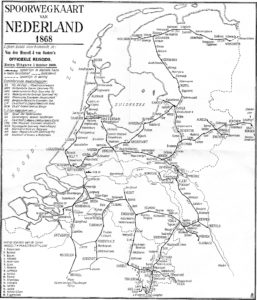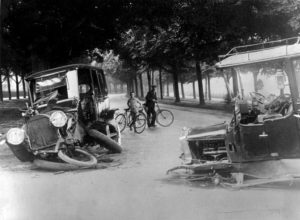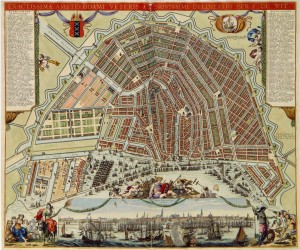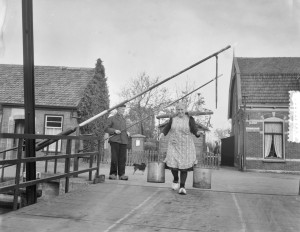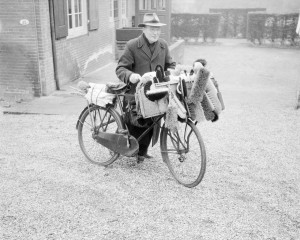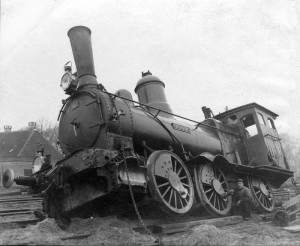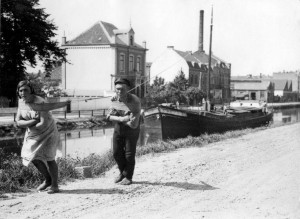This week we are looking at a map of routes from 1894. Understanding the major connections between cities may help you understand migration patterns. People who travelled along these lines may have met partners in other towns, or found work in a different place. You can zoom in at Gallica. The map indicates different types of routes: Bold solid orange lines represent railroads. Bold dashed orange lines represent trams. Thin solid orange lines represent streets with regular … [Read more...]
Dutch term – Trein
A trein is a train. The first railroad in the Netherlands was opened in 1839, between Amsterdam and Haarlem. Other railroads quickly followed and by the end of the 1800s, passenger travel by rail had supplanted travel by barge. Many emigrants leaving through the ports of Rotterdam, Amsterdam, or Antwerp took the train to the harbor. … [Read more...]
Dutch term – Kenteken
A kenteken is a license plate. The first license plates for cars and motor bikes were issued in 1898, a national registration. From 1906 to 1951, the provinces issued license plates. Some provinces have published databases with the issued license plates, sometimes with photos of the cars. License plate databases National license plates, issued 1898-1905 (Excel named "overzicht van de Rijksnummerbewijzen") Drenthe database Friesland database Groningen database Noord-Brabant … [Read more...]
Dutch term – Gracht
A gracht is a canal, usually in a city. Merchants liked living on the grachten since it made it easy to get their supplies delivered to them. The grachten were often the wealthiest parts of town, and also attracted other well-to-do families. Grachten also drained the water from the surrounding area. The Amsterdam grachtengordel [canal belt] is a UNESCO World Heritage Site. … [Read more...]
Dutch term – Tol
A tol was a toll, which was collected by a tolgaarder or tollenaar (toll collector). In earlier times, there were many tolls, often collected at strategically important locations along roads and rivers. Sometimes, a toll only had to be paid for transporting goods, but often even pedestrians had to pay a fee in order to pass. Treaties may have exempted some people from having to pay a toll. For some of these tolls, toll records have survived. They can provide useful insights into the lives … [Read more...]
Dutch term – Fiets
As the Tour de France starts in the Netherlands this week, this is a good time to learn the meaning of a quintessentially Dutch word: fiets (bicycle). Introduction of bikes Fietsen were introduced in the Netherlands in the last part of the 19th century. They were quickly adopted and became the most popular mode of transportation. Fietsen were not just used for personal transportation, but also by businesses (a 'bakfiets' with a container on the front wheel can be used to carry many goods) and … [Read more...]
Dutch term: Spoorwegen
The term Spoorwegen means Railways. The first railway in the Netherlands began in 1839, and ran between Amsterdam and Haarlem. In the rest of the 19th century, a multitude of railway companies developed a railway network that spanned the entire country. The train quickly replaced the Trekschuit (pulled barge) as the most popular form of long-distance transportation. … [Read more...]
Dutch term – Trekschuit
Trekschuit literally means "pull barge" and is a low-bottomed ship that was dragged along canals and rivers. In the waterlogged country that is The Netherlands, trekschuiten were one of the main forms of transportation for people and goods over longer distances, as roads were often so muddy that they were useless for most of the year. Most trekschuiten were powered by horses, who walked along the rivers and canals on specially created paths. In some cases, the people who operated the … [Read more...]

